#common performance issues in web applications
Explore tagged Tumblr posts
Text
Effective Debugging Techniques for Resolving Web Application Issues

Introduction
Web applications are complex systems that can encounter various issues, from bugs to performance problems. Effective debugging is crucial for resolving these issues quickly and efficiently. This article explores proven debugging techniques that can help developers identify and fix web application problems.
Understanding the Problem
Reproduce the Issue
The first step in debugging is to reproduce the issue consistently. Understanding the exact conditions under which the problem occurs helps narrow down the potential causes. Gather as much information as possible, including error messages, user reports, and logs.
Collect Relevant Data
Use logging and monitoring tools to collect relevant data about the issue. Tools like Loggly, Splunk, and Sentry can provide insights into what went wrong, when, and why. Detailed logs are invaluable for pinpointing the root cause of the problem.
Debugging Techniques
Code Review
Conduct a thorough code review to identify potential bugs. Reviewing code with fresh eyes or having another developer examine it can reveal issues that were previously overlooked. Pay attention to common problem areas like loops, conditionals, and data handling.
Use Debugging Tools
Leverage debugging tools and integrated development environments (IDEs) like Visual Studio Code, Chrome DevTools, or Firebug. These tools allow you to set breakpoints, step through code, and inspect variables, making it easier to understand the flow of execution and identify issues.
Isolate the Problem
Break down the code into smaller sections and isolate the problematic area. This process, known as “divide and conquer,” simplifies the debugging process by focusing on smaller, more manageable chunks of code.
Advanced Debugging
Profiling and Performance Monitoring
Use profiling tools to monitor performance and identify bottlenecks. Tools like New Relic, Dynatrace, and Google Lighthouse can help you analyze performance metrics and optimize your code for better efficiency.
Automated Testing
Implement automated testing to catch issues early in the development process. Unit tests, integration tests, and end-to-end tests can help ensure that your code behaves as expected and can significantly reduce the time spent on manual debugging.
Continuous Improvement
Learn from Mistakes
Document the debugging process and learn from each issue you resolve. Understanding the root causes of past problems can help prevent similar issues in the future. Share insights and best practices with your team to improve overall code quality.
Regular Maintenance
Perform regular maintenance and code reviews to keep your web application in good health. Proactive measures, such as updating dependencies and refactoring code, can prevent many issues from arising in the first place.
Conclusion
Effective debugging is essential for maintaining a reliable and efficient web application. By understanding the problem, using the right tools, and employing proven techniques, developers can quickly identify and resolve web application performance issues. Continuous improvement and proactive maintenance further ensure the long-term stability and performance of your web application.
#web application performance issues#web application issues#performing as expected#common performance issues in web applications
0 notes
Text
Protect Your Laravel APIs: Common Vulnerabilities and Fixes
API Vulnerabilities in Laravel: What You Need to Know
As web applications evolve, securing APIs becomes a critical aspect of overall cybersecurity. Laravel, being one of the most popular PHP frameworks, provides many features to help developers create robust APIs. However, like any software, APIs in Laravel are susceptible to certain vulnerabilities that can leave your system open to attack.

In this blog post, we’ll explore common API vulnerabilities in Laravel and how you can address them, using practical coding examples. Additionally, we’ll introduce our free Website Security Scanner tool, which can help you assess and protect your web applications.
Common API Vulnerabilities in Laravel
Laravel APIs, like any other API, can suffer from common security vulnerabilities if not properly secured. Some of these vulnerabilities include:
>> SQL Injection SQL injection attacks occur when an attacker is able to manipulate an SQL query to execute arbitrary code. If a Laravel API fails to properly sanitize user inputs, this type of vulnerability can be exploited.
Example Vulnerability:
$user = DB::select("SELECT * FROM users WHERE username = '" . $request->input('username') . "'");
Solution: Laravel’s query builder automatically escapes parameters, preventing SQL injection. Use the query builder or Eloquent ORM like this:
$user = DB::table('users')->where('username', $request->input('username'))->first();
>> Cross-Site Scripting (XSS) XSS attacks happen when an attacker injects malicious scripts into web pages, which can then be executed in the browser of a user who views the page.
Example Vulnerability:
return response()->json(['message' => $request->input('message')]);
Solution: Always sanitize user input and escape any dynamic content. Laravel provides built-in XSS protection by escaping data before rendering it in views:
return response()->json(['message' => e($request->input('message'))]);
>> Improper Authentication and Authorization Without proper authentication, unauthorized users may gain access to sensitive data. Similarly, improper authorization can allow unauthorized users to perform actions they shouldn't be able to.
Example Vulnerability:
Route::post('update-profile', 'UserController@updateProfile');
Solution: Always use Laravel’s built-in authentication middleware to protect sensitive routes:
Route::middleware('auth:api')->post('update-profile', 'UserController@updateProfile');
>> Insecure API Endpoints Exposing too many endpoints or sensitive data can create a security risk. It’s important to limit access to API routes and use proper HTTP methods for each action.
Example Vulnerability:
Route::get('user-details', 'UserController@getUserDetails');
Solution: Restrict sensitive routes to authenticated users and use proper HTTP methods like GET, POST, PUT, and DELETE:
Route::middleware('auth:api')->get('user-details', 'UserController@getUserDetails');
How to Use Our Free Website Security Checker Tool
If you're unsure about the security posture of your Laravel API or any other web application, we offer a free Website Security Checker tool. This tool allows you to perform an automatic security scan on your website to detect vulnerabilities, including API security flaws.
Step 1: Visit our free Website Security Checker at https://free.pentesttesting.com. Step 2: Enter your website URL and click "Start Test". Step 3: Review the comprehensive vulnerability assessment report to identify areas that need attention.
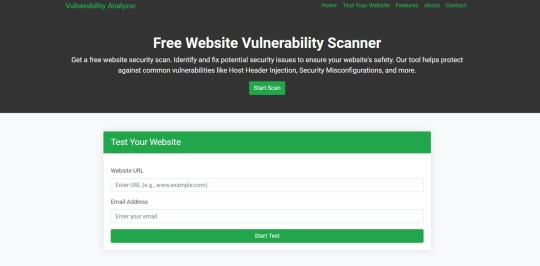
Screenshot of the free tools webpage where you can access security assessment tools.
Example Report: Vulnerability Assessment
Once the scan is completed, you'll receive a detailed report that highlights any vulnerabilities, such as SQL injection risks, XSS vulnerabilities, and issues with authentication. This will help you take immediate action to secure your API endpoints.
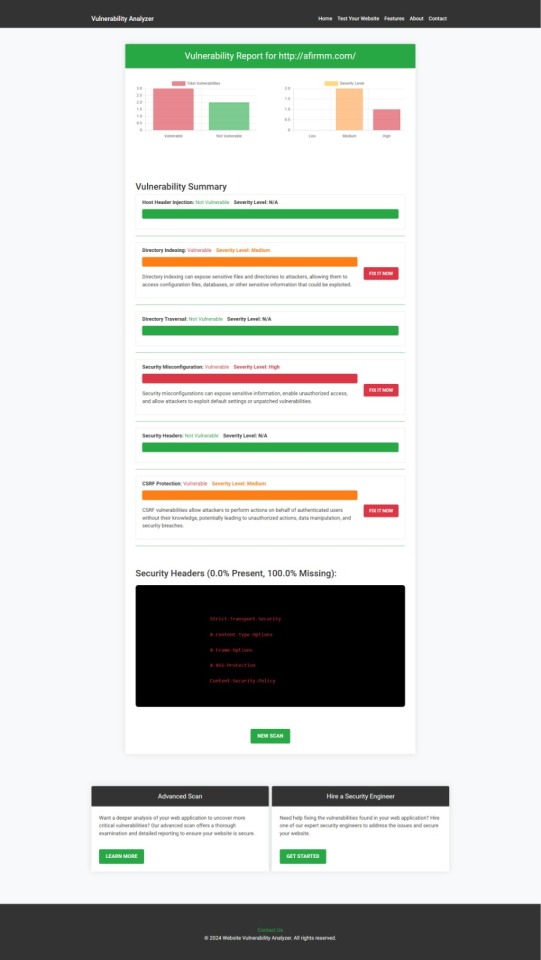
An example of a vulnerability assessment report generated with our free tool provides insights into possible vulnerabilities.
Conclusion: Strengthen Your API Security Today
API vulnerabilities in Laravel are common, but with the right precautions and coding practices, you can protect your web application. Make sure to always sanitize user input, implement strong authentication mechanisms, and use proper route protection. Additionally, take advantage of our tool to check Website vulnerability to ensure your Laravel APIs remain secure.
For more information on securing your Laravel applications try our Website Security Checker.
#cyber security#cybersecurity#data security#pentesting#security#the security breach show#laravel#php#api
2 notes
·
View notes
Text
Dedicated Server Hosting Package - Top Performance Guaranteed

In today’s digital landscape, where speed and reliability are paramount for any business, choosing the right hosting solution is crucial. One of the most robust options available is a dedicated server hosting package. This type of hosting provides businesses with the power and control needed to handle large amounts of traffic, secure sensitive data, and run complex applications without a hitch.
Why Choose a Dedicated Server Hosting Plan?
A dedicated server hosting plan is ideal for businesses that have outgrown shared hosting due to its numerous benefits. First, it offers unparalleled performance. With dedicated hosting, you receive a server solely for your use, ensuring that your website can handle high traffic volumes and demanding applications smoothly. This exclusivity eliminates the "noisy neighbor" effect—a common issue in shared hosting where one user’s heavy usage affects others on the same server.
Second, dedicated servers provide enhanced security. Since you are not sharing the server with anyone else, the risks associated with shared hosting environments, such as cross-site contamination and IP blacklisting, are significantly reduced. Moreover, with a dedicated server, you have the complete freedom to implement security measures that fit your specific needs, from firewalls to anti-virus solutions.
Advantages of Unlimited Web Hosting Plans
While dedicated servers are a top-tier choice, another option for growing businesses is an unlimited web hosting plan. These plans are perfect for businesses looking to expand their online presence without worrying about hitting bandwidth or storage caps. Unlimited hosting plans allow you to host multiple domains, which is ideal for businesses managing several brands or marketing campaigns. They also often come with a suite of tools to help you build, manage, and optimize your website efficiently.
Whether your business requires the robust power of a dedicated server or the expansive flexibility of an unlimited hosting plan, AKL Web Host offers tailored solutions that guarantee top performance. With their state-of-the-art infrastructure and expert support, you can ensure that your website remains fast, secure, and reliably online—driving your business forward in the increasingly competitive digital marketplace.

#dedicated server hosting package#dedicated server hosting plan#unlimited web hosting plan#Unlimited cPanel Hosting#Unlimited Plesk Hosting#Unlimited Web Hosting#Windows VPS Server#Cheap Dedicated Server#Unlimited WordPress Hosting#WordPress Hosting#Unlimited cPanel SSD Hosting#Unlimited Email Hosting#Unlimited Cheap Web Hosting#Unlimited WHMCS License#Best WordPress Hosting#Cheap Windows VPS Server#Best Windows VPS Servers#Cheap WordPress Hosting#Best web hosting for ecommerce#Managed wordpress hosting services#Best dedicated hosting services for 2024#Cheap linux VPS hosting#Plesk web hosting plans#Cpanel hosting plans#Hosting with free SSL certificate#Hosting with site migration services
4 notes
·
View notes
Text
Key Programming Languages Every Ethical Hacker Should Know
In the realm of cybersecurity, ethical hacking stands as a critical line of defense against cyber threats. Ethical hackers use their skills to identify vulnerabilities and prevent malicious attacks. To be effective in this role, a strong foundation in programming is essential. Certain programming languages are particularly valuable for ethical hackers, enabling them to develop tools, scripts, and exploits. This blog post explores the most important programming languages for ethical hackers and how these skills are integrated into various training programs.
Python: The Versatile Tool
Python is often considered the go-to language for ethical hackers due to its versatility and ease of use. It offers a wide range of libraries and frameworks that simplify tasks like scripting, automation, and data analysis. Python’s readability and broad community support make it a popular choice for developing custom security tools and performing various hacking tasks. Many top Ethical Hacking Course institutes incorporate Python into their curriculum because it allows students to quickly grasp the basics and apply their knowledge to real-world scenarios. In an Ethical Hacking Course, learning Python can significantly enhance your ability to automate tasks and write scripts for penetration testing. Its extensive libraries, such as Scapy for network analysis and Beautiful Soup for web scraping, can be crucial for ethical hacking projects.
JavaScript: The Web Scripting Language
JavaScript is indispensable for ethical hackers who focus on web security. It is the primary language used in web development and can be leveraged to understand and exploit vulnerabilities in web applications. By mastering JavaScript, ethical hackers can identify issues like Cross-Site Scripting (XSS) and develop techniques to mitigate such risks. An Ethical Hacking Course often covers JavaScript to help students comprehend how web applications work and how attackers can exploit JavaScript-based vulnerabilities. Understanding this language enables ethical hackers to perform more effective security assessments on websites and web applications.
Biggest Cyber Attacks in the World
youtube
C and C++: Low-Level Mastery
C and C++ are essential for ethical hackers who need to delve into low-level programming and system vulnerabilities. These languages are used to develop software and operating systems, making them crucial for understanding how exploits work at a fundamental level. Mastery of C and C++ can help ethical hackers identify and exploit buffer overflows, memory corruption, and other critical vulnerabilities. Courses at leading Ethical Hacking Course institutes frequently include C and C++ programming to provide a deep understanding of how software vulnerabilities can be exploited. Knowledge of these languages is often a prerequisite for advanced penetration testing and vulnerability analysis.
Bash Scripting: The Command-Line Interface
Bash scripting is a powerful tool for automating tasks on Unix-based systems. It allows ethical hackers to write scripts that perform complex sequences of commands, making it easier to conduct security audits and manage multiple tasks efficiently. Bash scripting is particularly useful for creating custom tools and automating repetitive tasks during penetration testing. An Ethical Hacking Course that offers job assistance often emphasizes the importance of Bash scripting, as it is a fundamental skill for many security roles. Being proficient in Bash can streamline workflows and improve efficiency when working with Linux-based systems and tools.
SQL: Database Security Insights
Structured Query Language (SQL) is essential for ethical hackers who need to assess and secure databases. SQL injection is a common attack vector used to exploit vulnerabilities in web applications that interact with databases. By understanding SQL, ethical hackers can identify and prevent SQL injection attacks and assess the security of database systems. Incorporating SQL into an Ethical Hacking Course can provide students with a comprehensive understanding of database security and vulnerability management. This knowledge is crucial for performing thorough security assessments and ensuring robust protection against database-related attacks.
Understanding Course Content and Fees
When choosing an Ethical Hacking Course, it’s important to consider how well the program covers essential programming languages. Courses offered by top Ethical Hacking Course institutes should provide practical, hands-on training in Python, JavaScript, C/C++, Bash scripting, and SQL. Additionally, the course fee can vary depending on the institute and the comprehensiveness of the program. Investing in a high-quality course that covers these programming languages and offers practical experience can significantly enhance your skills and employability in the cybersecurity field.
Certification and Career Advancement
Obtaining an Ethical Hacking Course certification can validate your expertise and improve your career prospects. Certifications from reputable institutes often include components related to the programming languages discussed above. For instance, certifications may test your ability to write scripts in Python or perform SQL injection attacks. By securing an Ethical Hacking Course certification, you demonstrate your proficiency in essential programming languages and your readiness to tackle complex security challenges. Mastering the right programming languages is crucial for anyone pursuing a career in ethical hacking. Python, JavaScript, C/C++, Bash scripting, and SQL each play a unique role in the ethical hacking landscape, providing the tools and knowledge needed to identify and address security vulnerabilities. By choosing a top Ethical Hacking Course institute that covers these languages and investing in a course that offers practical training and job assistance, you can position yourself for success in this dynamic field. With the right skills and certification, you’ll be well-equipped to tackle the evolving challenges of cybersecurity and contribute to protecting critical digital assets.
3 notes
·
View notes
Text
Transforming Digital Landscapes: The Excellence of Corusview IT Services.
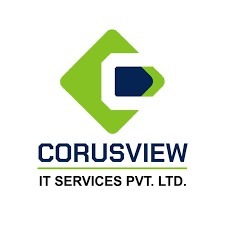
In today's fast-paced digital world, having a reliable and innovative technology partner is crucial for businesses aiming to stay ahead. Corusview IT Services, a leading web development company, stands out by offering top-tier software, web and mobile application development services. With a commitment to quality, reliability, and global reach, Corusview IT Services ensures that clients receive exceptional value for their investments.
In the ever-evolving digital landscape, businesses often face a myriad of challenges when it comes to web, mobile, and software development. Navigating these hurdles can be daunting, but the right technology partner can turn these challenges into opportunities.
Common challenges in Digital development:
Complexity and integration challenges
Web Development: Building dynamic, responsive, and user-friendly websites that effortlessly integrate with existing systems can be quite intricate.
Mobile Development: Creating mobile applications that function seamlessly across various devices and platforms while delivering an excellent user experience poses a significant challenge.
Software Development: Developing custom software solutions that need to integrate with multiple other applications and databases often results in compatibility issues.
Staying current with technology
The fast-paced nature of technological advancements makes it challenging for businesses to remain up-to-date with the latest trends and tools.
Ensuring digital solutions are scalable and future-proof demands continuous investment and specialized expertise.
User experience and design
Developing an intuitive and engaging user experience is essential for the success of any digital product.
Subpar design and usability can result in low user engagement and satisfaction.
Security and compliance
Maintaining the security of digital solutions and adhering to regulatory requirements is a critical concern. Data breaches and security vulnerabilities can have significant consequences for businesses.
How Corusview IT Services can assist:
Corusview IT Services provides a broad range of solutions specifically crafted to tackle these challenges and support businesses in thriving within the digital landscape.
Expert web development
Custom web development: Tailored solutions crafted to fit your unique business requirements.
Content Management Systems (CMS): User-friendly systems that simplify website updates and maintenance.
Cutting-Edge Mobile App Development
Mobile App Creation: Bespoke apps designed to meet the needs of diverse industries.
Cross-Platform Solutions: Strategies that extend your app’s reach and boost its effectiveness across different platforms.
Ongoing Updates and Support: Regular enhancements and maintenance to keep your app fresh, secure, and up-to-date.
User-centric designs
UX and UI Innovation: Creating immersive and visually appealing designs tailored to enhance user interaction.
Prototyping and Usability Testing: Developing and refining prototypes to ensure optimal functionality and user satisfaction.
Ongoing Enhancement: Continuously evolving designs based on user feedback to maintain relevance and effectiveness.
Pioneering Technology and Innovation
Forefront of technological advancements, embracing the latest innovations to deliver state-of-the-art solutions.
Cutting-edge technology ensures your digital products are not only scalable and future-ready but also perfectly in tune with the latest market trends.
Rigorous Quality Assurance:
Implementing comprehensive quality assurance processes to ensure that every solution meets the highest standards of performance and reliability.
At Corusview IT Services, we’re dedicated to helping businesses tackle digital development challenges and achieve their ambitions. Whether you need a cutting-edge website, a bespoke software solution, or a trailblazing mobile app, our skilled team is here to provide top-notch results.
Elevate your digital game with us and witness the transformative power of our solutions. Learn more about how we can boost your company’s digital presence by visiting www.corusview.com.
#it services#technology#web development#mobile development#software development#software development company#web app development#mobile application development#digital marketing#services
4 notes
·
View notes
Text
Revolutionizing Web Development: Exploring the Power of Generative AI in Website Creation
Due to the rapid development of AI, we can easily implement it any any field of work. Open source AI's are super beneficial for writing codes and designing them. Lets take a look at some applications of AI in website developemt:

1 Improve User Experience:
AI can analyze lots of data quickly, helping create and test websites more efficiently. AI can also improve your user experience (UX) design by providing up-to-date information about how users behave and what they prefer.
2)Increase Customer Satisfaction:
AI chatbots can handle common customer interactions, resolve issues, and provide 24/7 assistance for your business online.
3) Personalize Content:
AI-powered content generation tools enable you to deliver articles tailored to the preferences and needs of individual users. With data analysis, AI machine learning can generate targeted content recommendations, such as personalized product suggestions, blog posts, or offers.
4) Improve Website Performance:
AI can optimize web performance by analyzing user data and identifying areas for improvement. AI tools monitor site traffic, user behavior, and conversion rates to identify bottlenecks and areas that need optimization.
5) Increase Website Speed:
One way AI can help is by compressing images automatically. AI algorithms can analyze and optimize images, reducing their file sizes while maintaining visual appeal. This results in faster loading times for web pages.
References:
2 notes
·
View notes
Text
Frontend Frameworks for Web Development

Frontend Frameworks for Web Development, creating captivating and user-friendly websites and web applications is essential for businesses to thrive. With the increasing demand for dynamic and interactive web experiences, frontend development has become more crucial than ever.
To meet these demands efficiently, developers rely on frontend frameworks, which streamline the development process and enhance productivity.
In this comprehensive guide, we'll explore the world of frontend frameworks for web development, covering everything from key factors to consider when choosing a framework to the top options available in India.
Overview of Frontend Frameworks for Web Development
Frontend frameworks are collections of pre-written code, libraries, and tools that expedite the process of building user interfaces for websites and web applications.
These frameworks provide developers with a structured approach to frontend development, offering ready-made components, templates, and utilities to streamline common tasks.
By leveraging frontend frameworks, developers can achieve consistency, maintainability, and scalability in their projects while focusing more on functionality and user experience.
These frameworks often follow the principles of modularization and component-based architecture, facilitating code reuse and making development more efficient.
Key Factors to Consider in a Frontend Frameworks for Web Development
When choosing a frontend framework for web development, several key factors should be considered:
Community Support: Opt for frameworks with active and robust communities. A strong community ensures ongoing support, frequent updates, and a wealth of resources such as documentation, tutorials, and plugins.
Performance: Evaluate the performance metrics of the framework, including page load times, rendering speed, and resource utilization. A lightweight and efficient framework can significantly impact the user experience.
Flexibility and Customization: Assess the framework's flexibility in accommodating project requirements and its customization options. Look for frameworks that allow developers to tailor components and styles to suit specific design needs.
Learning Curve: Consider the learning curve associated with the framework, especially if you're working with a team of developers with varying skill levels. Choose a framework that aligns with your team's expertise and resources.
Compatibility and Browser Support: Ensure that the framework is compatible with a wide range of browsers and devices, particularly if your target audience includes users with diverse preferences and devices.
Updates and Maintenance: Check the framework's update frequency and long-term maintenance plans. Regular updates and proactive maintenance are essential for addressing security vulnerabilities and compatibility issues.
7 Best Frontend Frameworks for Web Development in India
Now, let's explore some of the top Frontend Frameworks for Web Development widely used by developers in India:
React.js: Developed by Facebook, React.js is a popular JavaScript library for building user interfaces. It emphasizes component-based architecture and virtual DOM for efficient rendering. React's ecosystem includes tools like React Router for routing and Redux for state management.
Angular: Backed by Google, Angular is a comprehensive frontend framework for building robust web applications. It provides features such as two-way data binding, dependency injection, and modular development. Angular offers a full-fledged ecosystem with Angular CLI for project scaffolding and Angular Material for UI components.
Vue.js: Vue.js is an advanced JavaScript framework known for its simplicity and flexibility. It allows developers to incrementally adopt its features and integrate it into existing projects easily. Vue.js offers reactive data binding, virtual DOM, and a rich ecosystem of plugins and components.
Bootstrap: Bootstrap is a popular CSS framework for building responsive and mobile-first websites. It provides a grid system, pre-styled components, and responsive utilities, allowing developers to create sleek and consistent designs quickly. Bootstrap is highly customizable and offers extensive documentation and community support.
Svelte: Svelte is a relatively new frontend framework that focuses on compiling components at build time rather than runtime. This approach results in highly optimized and lightweight web applications. Svelte's simplicity and performance make it an attractive choice for developers seeking efficiency and speed.
Tailwind CSS: Tailwind CSS is a utility-first CSS framework that provides a set of low-level utility classes for building custom designs. It offers a highly customizable and expressive approach to styling, enabling developers to create unique and responsive interfaces without writing custom CSS. Tailwind CSS is gaining popularity for its developer-friendly workflow and rapid prototyping capabilities.
Foundation: Foundation is a responsive front-end framework developed by ZURB, known for its modular and customizable nature. It offers a comprehensive set of CSS and JavaScript components, as well as a robust grid system and a variety of UI elements. Foundation is well-suited for building modern and accessible web projects.
Conclusion for Web Development
Choosing the right Frontend Frameworks for Web Development is crucial to the success of your website development. Consider factors such as community support, performance, flexibility, and compatibility when evaluating different frameworks. Each framework has its strengths and weaknesses, so assess your project requirements and development preferences carefully before making a decision.
Whether you opt for React.js, Angular, Vue.js, or any other frontend framework, prioritize learning and mastering the chosen tool to maximize its potential and deliver exceptional web experiences. Keep abreast of new developments, best practices, and emerging trends in frontend development to stay ahead in this ever-evolving field.
FAQs for Web Development
Q: Which frontend framework is best for beginners?
A: Vue.js and React.js are often recommended for beginners due to their relatively gentle learning curves and extensive documentation.
Q: How do I choose between Angular and React for my project?
A: Consider factors such as project requirements, team expertise, and ecosystem preferences. Angular offers a comprehensive solution with built-in features, while React provides more flexibility and a vibrant ecosystem.
Q: Are frontend frameworks necessary for web development?
A: While not strictly necessary, frontend frameworks greatly simplify and expedite the web development process, especially for complex and dynamic projects. They provide structure, consistency, and efficiency, ultimately enhancing productivity and user experience.
Q: Can I use multiple frontend frameworks in the same project?
A: While technically possible, using multiple frontend frameworks in the same project can lead to complexity, conflicts, and maintenance challenges. It's generally advisable to stick to a single framework to maintain code consistency and streamline development.
More Details
Email: [email protected]
Website: https://censoware.com/
#web development#website development#software development#web developers#pythonprogramming#phpdeveloper#javascriptdeveloper#mern stack development#mobile app development
2 notes
·
View notes
Text
Mastering Selenium Testing: Overcoming Common Automation Challenges
Introduction: Selenium, renowned for its prowess in automation testing, is a cornerstone of modern software development. However, as testers embark on their Selenium journey, they encounter various challenges that can impede the efficiency and effectiveness of their automation efforts. In this guide, we delve into the common hurdles faced in Selenium testing and explore strategies to overcome them, empowering testers to excel in their automation endeavors.

Navigating Cross-Browser Compatibility: Ensuring consistent performance across diverse browsers is paramount in web application testing. However, achieving cross-browser compatibility with Selenium poses its share of challenges. Testers must meticulously validate their scripts across multiple browsers, employing robust strategies to address discrepancies and ensure seamless functionality.
Taming Dynamic Element Identification: Dynamic web elements, a common feature in modern web applications, present a formidable challenge for Selenium testers. The ever-changing nature of these elements requires testers to adapt their automation strategies accordingly. Employing dynamic locators and resilient XPath expressions helps testers tame these dynamic elements, ensuring reliable interaction and seamless test execution.
Synchronizing Actions in Asynchronous Environments: The asynchronous nature of web applications introduces synchronization issues that can undermine the reliability of Selenium tests. To mitigate these challenges, testers must implement effective synchronization techniques, such as explicit and implicit waits, to harmonize test actions with the application's dynamic behavior. This ensures consistent and accurate test execution across varying environmental conditions.
Efficiently Handling Frames and Windows: Frames and windows are integral components of web applications, presenting unique challenges for Selenium automation. Testers must adeptly navigate these elements, employing tailored automation strategies to interact with elements nested within frames and manage multiple browser windows seamlessly. This ensures comprehensive test coverage and accurate validation of application functionality.
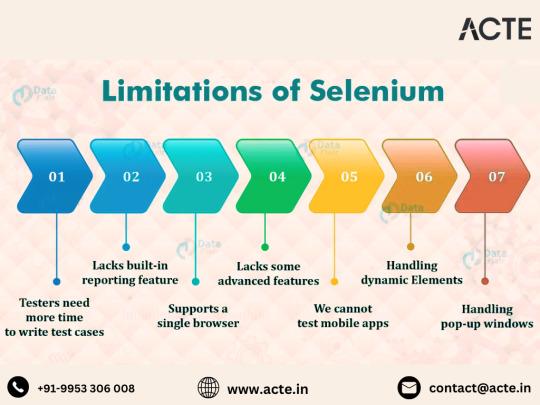
Unlocking Performance Testing Potential: While Selenium excels in functional testing, leveraging it for performance testing requires careful consideration. Testers must explore complementary tools and frameworks to simulate realistic user interactions and assess application performance under varying load conditions. This holistic approach ensures comprehensive test coverage and robust performance validation.
Streamlining Test Maintenance Processes: Maintaining Selenium test suites is a perpetual endeavor, necessitating proactive strategies to adapt to evolving application requirements. Testers must prioritize modularization and abstraction, enabling seamless updates and enhancements to test scripts. Embracing version control and continuous integration practices further streamlines the test maintenance process, ensuring agility and efficiency in automation efforts.
Enhancing Reporting and Debugging Capabilities: Effective test analysis hinges on robust reporting and debugging capabilities. Testers must augment Selenium's native features with third-party reporting tools and frameworks to generate comprehensive test reports and streamline issue identification and resolution. This empowers testers to glean actionable insights and drive continuous improvement in test automation practices.
Empowering Data-Driven Testing: Data-driven testing is a cornerstone of robust automation strategies, yet managing test data poses its own set of challenges. Testers must implement scalable solutions for test data management, leveraging data-driven testing frameworks and integration with test management tools to enhance test coverage and efficiency. This ensures comprehensive validation of application functionality across diverse scenarios.
Ensuring Consistent Test Environment Setup: Establishing a consistent test environment is essential for reliable and reproducible test results. Testers must invest in robust environment provisioning and configuration management practices, ensuring parity across development, staging, and production environments. This minimizes environmental discrepancies and enhances the reliability of automation efforts.
Leveraging Community Resources and Collaboration: Navigating the intricacies of Selenium testing requires collaboration and knowledge-sharing within the testing community. Testers must actively engage with forums, online communities, and documentation to leverage collective wisdom and address challenges collaboratively. This fosters a culture of continuous learning and innovation, propelling automation efforts to new heights.
Conclusion: While Selenium testing presents its share of challenges, adeptly navigating these hurdles empowers testers to realize the full potential of automation testing. By embracing best practices, leveraging complementary tools and frameworks, and fostering a collaborative testing culture, testers can overcome obstacles and unlock the true power of Selenium for test automation.
3 notes
·
View notes
Text
This Week in Rust 526
Hello and welcome to another issue of This Week in Rust! Rust is a programming language empowering everyone to build reliable and efficient software. This is a weekly summary of its progress and community. Want something mentioned? Tag us at @ThisWeekInRust on Twitter or @ThisWeekinRust on mastodon.social, or send us a pull request. Want to get involved? We love contributions.
This Week in Rust is openly developed on GitHub and archives can be viewed at this-week-in-rust.org. If you find any errors in this week's issue, please submit a PR.
Updates from Rust Community
Official
Blog: Launching the 2023 State of Rust Survey Survey
A Call for Proposals for the Rust 2024 Edition
Project/Tooling Updates
ratatui: a Rust library for cooking up terminal user interfaces - v0.25.0
Introducing Gooey: My take on a Rusty GUI framework
Two New Open Source Rust Crates Create Easier Cedar Policy Management
Introducing FireDBG - a Time Travel Visual Debugger for Rust
Fornjot 0.48.0 - open source b-rep CAD kernel written in Rust
Committing to Rust for kernel code
A Rust implementation of Android's Binder
Preventing atomic-context violations in Rust code with klint
Rust for Linux — in space
Observations/Thoughts
Rust is growing
A curiously recurring lifetime issue
The rabbit hole of unsafe Rust bugs
Faster Rust Toolchains for Android
The Most Common Rust Compiler Errors as Encountered in RustRover: Part 1
Nine Rules for SIMD Acceleration of your Rust Code (Part 2): General Lessons from Boosting Data Ingestion in the range-set-blaze Crate by 7x
What I Learned Making an embedded-hal Driver in Rust (for the MAX6675 Thermocouple Digitizer)
Rust Walkthroughs
Rust: Traits
Write a Toy VPN in Rust
Getting Started with Actix Web in Rust
Getting Started with Rocket in Rust
Generic types for function parameters in Rust 🦀
Benchmarking Rust Compiler Settings with Criterion: Controlling Criterion with Scripts and Environment Variables
[series] Multithreading and Memory-Mapping: Refining ANN Performance with Arroy
[series] Getting started with Tiny HTTP building a web application in Rust
Miscellaneous
Embedded Rust Education: 2023 Reflections & 2024 Visions
The Most Common Rust Compiler Errors as Encountered in RustRover: Part 1
Default arguments for functions in Rust using macros
[audio] Rust in Production Ep 1 - InfluxData's Paul Dix
[audio] Episode 160: Rust & Safety at Adobe with Sean Parent
Crate of the Week
This week's crate is constcat, a std::concat!-replacement with support for const variables and expressions.
Thanks to Ross MacArthur for the self-suggestion!
Please submit your suggestions and votes for next week!
Call for Participation
Always wanted to contribute to open-source projects but did not know where to start? Every week we highlight some tasks from the Rust community for you to pick and get started!
Some of these tasks may also have mentors available, visit the task page for more information.
Ockam - Fix documentation warnings
Ockam - Library - Validate CBOR structs according to the cddl schema for nodes/models/secure_channel
Ockam - Implement events in SqlxDatabase
Hyperswitch - [REFACTOR]: [Nuvei] MCA metadata validation
Hyperswitch - [FEATURE] : [Noon] Sync with Hyperswitch Reference
Hyperswitch - [FEATURE] : [Zen] Sync with Hyperswitch Reference
Hyperswitch - [REFACTOR] : [Authorizedotnet] Sync with Hyperswitch Reference
If you are a Rust project owner and are looking for contributors, please submit tasks here.
Updates from the Rust Project
386 pull requests were merged in the last week
enable stack probes on aarch64 for LLVM 18
add new tier 3 aarch64-apple-watchos target
add hexagon support
add the function body span to StableMIR
allow async_fn_in_trait traits with Send variant
cherry-pick "M68k: Fix ODR violation in GISel code (#72797)"
AIX: fix XCOFF metadata
-Ztrait-solver=next to -Znext-solver
actually parse async gen blocks correctly
add a method to StableMIR to check if a type is a CStr
add more suggestions to unexpected cfg names and values
add support for --env on tracked_env::var
add unstable -Zdefault-hidden-visibility cmdline flag for rustc
annotate panic reasons during enum layout
attempt to try to resolve blocking concerns (RFC #3086)
avoid overflow in GVN constant indexing
cache param env canonicalization
check FnPtr/FnDef built-in fn traits correctly with effects
check generic params after sigature for main-fn-ty
collect lang items from AST, get rid of GenericBound::LangItemTrait
coroutine variant fields can be uninitialized
coverage: skip instrumenting a function if no spans were extracted from MIR
deny ~const trait bounds in inherent impl headers
desugar yield in async gen correctly, ensure gen always returns unit
don't merge cfg and doc(cfg) attributes for re-exports
erase late bound regions from Instance::fn_sig() and add a few more details to StableMIR APIs
fix ICE ProjectionKinds Deref and Field were mismatched
fix LLD thread flags in bootstrap on Windows
fix waker_getters tracking issue number
fix alignment passed down to LLVM for simd_masked_load
fix dynamic size/align computation logic for packed types with dyn trait tail
fix overlapping spans in delimited meta-vars
ICE 110453: fixed with errors
llvm-wrapper: adapt for LLVM API changes
make IMPLIED_BOUNDS_ENTAILMENT into a hard error from a lint
make exhaustiveness usable outside of rustc
match lowering: Remove the make_target_blocks hack
more expressions correctly are marked to end with curly braces
nudge the user to kill programs using excessive CPU
opportunistically resolve region var in canonicalizer (instead of resolving root var)
properly reject default on free const items
remove unnecessary constness from ProjectionCandidate
replace some instances of FxHashMap/FxHashSet with stable alternatives (mostly in rustc_hir and rustc_ast_lowering)
resolve: replace visibility table in resolver outputs with query feeding
skip rpit constraint checker if borrowck return type error
some cleanup and improvement for invalid ref casting impl
tweak short_ty_string to reduce number of files
unconditionally register alias-relate in projection goal
update FreeBSD CI image
uplift TypeAndMut and ClosureKind to rustc_type_ir
use if cfg! instead of #[cfg]
use the LLVM option NoTrapAfterNoreturn
miri: visit the AllocIds and BorTags in borrow state FrameExtra
miri run: default to edition 2021
miri: make mmap not use expose semantics
fast path for declared_generic_bounds_from_env
stabilize type_name_of_val
stabilize ptr::{from_ref, from_mut}
add core::intrinsics::simd
add a column number to dbg!()
add more niches to rawvec
add ASCII whitespace trimming functions to &str
fix cases where std accidentally relied on inline(never)
Windows: allow File::create to work on hidden files
std: add xcoff in object's feature list
codegen: panic when trying to compute size/align of extern type
codegen_gcc: simd: implement missing intrinsics from simd/generic-arithmetic-pass.rs
codegen_llvm: set DW_AT_accessibility
cargo: clean up package metadata
cargo: do not allow empty name in package ID spec
cargo: fill in more empty name holes
cargo: hold the mutate exclusive lock when vendoring
rustdoc: use Map instead of Object for source files and search index
rustdoc: allow resizing the sidebar / hiding the top bar
rustdoc-search: fix a race condition in search index loading
rustdoc-search: use set ops for ranking and filtering
bindgen: use \r\n on windows
bindgen: better working destructors on windows
clippy: add new unconditional_recursion lint
clippy: new Lint: result_filter_map / Mirror of option_filter_map
clippy: don't visit nested bodies in is_const_evaluatable
clippy: redundant_pattern_matching: lint if let true, while let true, matches!(.., true)
clippy: do not lint assertions_on_constants for const _: () = assert!(expr)
clippy: doc_markdown Recognize words followed by empty parentheses () for quoting
clippy: fix binder handling in unnecessary_to_owned
rust-analyzer: deduplicate annotations
rust-analyzer: optimizing Performance with Promise.all 🏎
rust-analyzer: desugar doc correctly for mbe
rust-analyzer: dont assume ascii in remove_markdown
rust-analyzer: resolve alias before resolving enum variant
rust-analyzer: add minimal support for the 2024 edition
rust-analyzer: move out WithFixture into dev-dep only crate
rust-analyzer: fix false positive type mismatch in const reference patterns
rust-analyzer: syntax fixup now removes subtrees with fake spans
rust-analyzer: update builtin attrs from rustc
rust-analyzer: fix fragment parser replacing matches with dummies on incomplete parses
rust-analyzer: fix incorrectly replacing references in macro invocation in "Convert to named struct" assist
Rust Compiler Performance Triage
A lot of noise in the results this week; there was an lull in the noise recently, so our auto-inferred noise threshold went down, and thus five PR's were artificially flagged this week (and three supposed improvements were just reverting to the mean). Beyond that, we had three nice improvements: the first to debug builds in #117962 (by ceasing emission of expensive+unused .debug_pubnames and .debug_pubtypes), a second to diesel and serde in #119048 (by avoiding some unnecessary work), and a third to several benchmarks in #117749 (by adding some caching of an internal compiler structure).
Triage done by @pnkfelix. Revision range: 57010939..bf9229a2
6 Regressions, 9 Improvements, 3 Mixed; 5 of them in rollups 67 artifact comparisons made in total
Full report here
Approved RFCs
Changes to Rust follow the Rust RFC (request for comments) process. These are the RFCs that were approved for implementation this week:
No RFCs were approved this week.
Final Comment Period
Every week, the team announces the 'final comment period' for RFCs and key PRs which are reaching a decision. Express your opinions now.
RFCs
[disposition: postpone] RFC: Precise Pre-release Deps
Tracking Issues & PRs
[disposition: merge] Support async recursive calls (as long as they have indirection)
[disposition: merge] make soft_unstable show up in future breakage reports
[disposition: merge] Tracking Issue for ip_in_core
Language Reference
No Language Reference RFCs entered Final Comment Period this week.
Unsafe Code Guidelines
No Unsafe Code Guideline RFCs entered Final Comment Period this week.
New and Updated RFCs
RFC: patchable-function-entry
Call for Testing
An important step for RFC implementation is for people to experiment with the implementation and give feedback, especially before stabilization. The following RFCs would benefit from user testing before moving forward:
No RFCs issued a call for testing this week.
If you are a feature implementer and would like your RFC to appear on the above list, add the new call-for-testing label to your RFC along with a comment providing testing instructions and/or guidance on which aspect(s) of the feature need testing.
Upcoming Events
Rusty Events between 2023-12-20 - 2024-01-17 🦀
Virtual
2023-12-20 | Virtual (Vancouver, BC, CA) | Vancouver Rust
Adventures in egui app dev
2023-12-26 | Virtual (Dallas, TX, US) | Dallas Rust
Last Tuesday
2023-12-28 | Virtual (Charlottesville, NC, US) | Charlottesville Rust Meetup
Crafting Interpreters in Rust Collaboratively
2024-01-03 | Virtual (Indianapolis, IN, US) | Indy Rust
Indy.rs - with Social Distancing
2024-01-09 | Virtual (Dallas, TX, US) | Dallas Rust
Last Tuesday
2024-01-11 | Virtual (Charlottesville, NC, US) | Charlottesville Rust Meetup
Crafting Interpreters in Rust Collaboratively
2024-01-16 | Virtual (Washington, DC, US) | Rust DC
Mid-month Rustful
Europe
2023-12-27 | Copenhagen, DK | Copenhagen Rust Community
Rust hacknight #1: CLIs, TUIs and plushies
2023-12-28 | Vienna, AT | Rust Vienna
Rust Dojo 3: Holiday Edition
2024-01-11 | Reading, UK | Reading Rust Workshop
Reading Rust Meetup at Browns
2024-01-11 | Wrocław, PL | Rust Wrocław
Rust Meetup #36
2024-01-13 | Helsinki, FI | Finland Rust-lang Group
January Meetup
North America
2023-12-20 | Austin, TX, US | Rust ATX
Rust Lunch - Fareground
2023-12-27 | Austin, TX, US | Rust ATX
Rust Lunch - Fareground
2024-01-06 | Boston, MA, US | Boston Rust Meetup
Beacon Hill Rust Lunch
2024-01-08 | Chicago, IL, US | Deep Dish Rust
Rust Hack Night
2024-01-09 | Seattle, WA, US | Cap Hill Rust Coding/Hacking/Learning
Rusty Coding/Hacking/Learning Night
2024-01-09 | Minneapolis, MN, US | Minneapolis Rust Meetup
Minneapolis Rust Meetup Happy Hour
2024-01-14 | Cambridge, MA, US | Boston Rust Meetup
Alewife Rust Lunch
2024-01-16 | San Francisco, CA, US | San Francisco Rust Study Group
Rust Hacking in Person
2024-01-17 | Chicago, IL, US | Deep Dish Rust
Rust Happy Hour
If you are running a Rust event please add it to the calendar to get it mentioned here. Please remember to add a link to the event too. Email the Rust Community Team for access.
Jobs
Please see the latest Who's Hiring thread on r/rust
Quote of the Week
The Tianyi-33 satellite is a 50kg class space science experimental satellite equipped with an operating system independently developed by Beijing University of Posts and Telecommunications—the Rust-based dual-kernel real-time operating system RROS. RROS will carry out general tasks represented by tensorflow/k8s and real-time tasks represented by real-time file systems and real-time network transmission on the satellite. It will ensure the normal execution of upper-layer applications and scientific research tasks, such as time-delay measurement between satellite and ground, live video broadcasting, onboard web chat services, pseudo-SSH experiments, etc. This marks the world’s first official application of a Rust-written dual-kernel operating system in a satellite scenario.
– Qichen on the RROS web page
Thanks to Brian Kung for the suggestion!
Please submit quotes and vote for next week!
This Week in Rust is edited by: nellshamrell, llogiq, cdmistman, ericseppanen, extrawurst, andrewpollack, U007D, kolharsam, joelmarcey, mariannegoldin, bennyvasquez.
Email list hosting is sponsored by The Rust Foundation
Discuss on r/rust
2 notes
·
View notes
Text
Unleashing the Power of VPS Hosting: Elevate Your Online Presence with VPS Server Solutions in India

In the dynamic landscape of web hosting, Virtual Private Servers (VPS) have emerged as a game-changer for businesses and individuals seeking a robust, scalable, and cost-effective hosting solution. In this blog post, we’ll delve into the realm of VPS hosting, exploring its benefits and why it has become the go-to choice for many in the Indian online community.
Understanding VPS Hosting: A Brief Overview
Virtual Private Servers, often referred to as VPS, bridge the gap between shared hosting and dedicated servers. Imagine a condominium where each unit is a private space, yet all residents share common resources like the building infrastructure. Similarly, in VPS hosting, a physical server is partitioned into multiple virtual servers, each functioning independently with its dedicated resources.
The Advantages of VPS Hosting
Scalability: One of the standout features of VPS hosting is scalability. As your website or application grows, you can easily scale up by adjusting your resources — be it RAM, CPU, or storage space. This flexibility ensures that your hosting environment evolves seamlessly with the changing needs of your online presence.
Enhanced Performance: VPS hosting provides dedicated resources, eliminating the performance bottlenecks often associated with shared hosting. With a VPS server, you have guaranteed access to the allocated resources, resulting in faster loading times and improved overall performance for your website or application.
Cost-Effectiveness: While dedicated servers offer unparalleled performance, they often come with a hefty price tag. VPS hosting strikes a balance by providing dedicated resources at a fraction of the cost. This makes it an ideal choice for businesses and individuals looking for high-performance hosting without breaking the bank.
VPS Hosting in India: Tailored Solutions for Local Needs
In recent years, the demand for VPS hosting in India has seen a significant surge, driven by the growing online presence of businesses and individuals alike. Hosting providers are recognizing the need for localized solutions, ensuring low-latency access and optimal performance for users in the region.
Geographical Advantage: Opting for VPS hosting in India comes with the geographical advantage of reduced latency. This means faster loading times for your website or application, providing an enhanced user experience for your audience in the Indian subcontinent.
Local Support: Choosing a VPS hosting provider with a presence in India ensures access to local support teams familiar with the unique challenges and requirements of the Indian market. This can be a game-changer when it comes to troubleshooting issues and receiving timely assistance.
Choosing the Right VPS Hosting Provider in India
When selecting a VPS hosting provider in India, it’s crucial to consider factors such as server reliability, customer support, and the range of plans offered. Look for providers that offer a user-friendly interface, robust security features, and a track record of high uptime.
VPS hosting stands as a versatile and powerful solution for those seeking a hosting environment that combines the benefits of dedicated resources with cost-effectiveness. In the Indian context, the rise of VPS hosting reflects the evolving digital landscape, with providers tailoring solutions to meet the specific needs of the local market. Whether you’re running a business website, e-commerce platform, or a resource-intensive application, VPS hosting could be the key to unlocking a seamless and high-performing online presence.
2 notes
·
View notes
Text
The Versatile Role of a DevOps Engineer: Navigating the Convergence of Dev and Ops
The world of technology is in a state of constant evolution, and as businesses increasingly rely on software-driven solutions, the role of a DevOps engineer has become pivotal. DevOps engineers are the unsung heroes who seamlessly merge the worlds of software development and IT operations to ensure the efficiency, security, and automation of the software development lifecycle. Their work is like the unseen wiring in a well-orchestrated symphony, making sure that every note is played in harmony. This blog will delve into the world of DevOps engineering, exploring the intricacies of their responsibilities, the skills they wield, and the dynamic nature of their day-to-day work.

The DevOps Engineer: Bridging the Gap
DevOps engineers are the bridge builders in the realm of software development. They champion collaboration between development and operations teams, promoting faster development cycles and more reliable software. These professionals are well-versed in scripting, automation, containerization, and continuous integration/continuous deployment (CI/CD) tools. Their mission is to streamline processes, enhance system reliability, and contribute to the overall success of software projects.
The Skill Set of a DevOps Engineer
A DevOps engineer's skill set is a versatile mix of technical and soft skills. They must excel in coding and scripting, system administration, and automation tools, creating efficient pipelines with CI/CD integration. Proficiency in containerization and orchestration, cloud computing, and security is crucial. DevOps engineers are excellent collaborators with strong communication skills and a knack for problem-solving. They prioritize documentation and are committed to continuous professional development, ensuring they remain invaluable in the dynamic landscape of modern IT operations..
What a DevOps Engineer Does Throughout the Day
A typical day for a DevOps engineer is dynamic and multifaceted, reflecting the varied responsibilities in this role. They focus on collaboration, automation, and efficiency, aiming to ensure that the software development lifecycle is smooth. Their day often begins with a deep dive into infrastructure management, where they meticulously check the health of servers, networks, and databases, ensuring that all systems are up and running smoothly. One of the main priorities is minimising disruptions and downtime.
Here's a closer look at the intricate web of tasks that DevOps engineers expertly navigate throughout the day:
1. Collaboration with Development Teams: DevOps engineers embark on a journey of collaboration, working closely with software development teams. They strive to comprehend the intricacies of new features and applications, ensuring that these seamlessly integrate with the existing infrastructure and are deployable.
2. Containerization and Orchestration: In the ever-evolving world of DevOps, the use of containerization technologies like Docker and orchestration tools such as Kubernetes is a common practice. DevOps engineers dedicate their time to efficiently manage containerized applications and scale them according to varying workloads.
3. Incident Response: In the dynamic realm of IT, unpredictability is the norm. Issues and incidents can rear their heads at any moment. DevOps engineers stand as the first line of defense, responsible for rapid incident response. They delve into issues, relentlessly searching for root causes, and swiftly implement solutions to restore service and ensure a seamless user experience.
4. Performance Optimization: Continuous performance optimization is the name of the game. DevOps engineers diligently analyze system performance data, pinpointing bottlenecks, and proactively applying enhancements to boost application speed and efficiency. Their commitment to optimizing performance ensures a responsive and agile digital ecosystem.
5. Documentation: Behind the scenes, DevOps engineers meticulously maintain comprehensive documentation. This vital documentation encompasses infrastructure configurations and standard operating procedures. Its purpose is to ensure that processes are repeatable, transparent, and easily accessible to the entire team.
6. Professional Development: The world of DevOps is in constant flux, with new technologies and trends emerging regularly. To stay ahead of the curve, DevOps engineers are committed to ongoing professional development. This entails self-guided learning, attendance at workshops, and, in many cases, achieving additional certifications to deepen their expertise.

In conclusion, the role of a DevOps engineer is one of great significance in today's tech-driven world. These professionals are the linchpins that keep the machinery of software development and IT operations running smoothly. With their diverse skill set, they streamline processes, enhance efficiency, and ensure the reliability and security of applications. The dynamic nature of their work, encompassing collaboration, automation, and infrastructure management, makes them indispensable.
For those considering a career in DevOps, the opportunities are vast, and the demand for skilled professionals continues to grow. ACTE Technologies stands as a valuable partner on your journey to mastering DevOps. Their comprehensive training programs provide the knowledge and expertise needed to excel in this ever-evolving field. Your path to becoming a proficient DevOps engineer starts here, with a world of possibilities awaiting you.
3 notes
·
View notes
Text
Effective Troubleshooting for Common Web Application Errors

Web applications are essential for many businesses, but they can encounter various errors that disrupt functionality and user experience. Effective troubleshooting is crucial for maintaining a reliable and efficient application. Here’s how to tackle common web application errors effectively.
1. Identifying the Error
Gather Information
Begin by collecting detailed information about the error. User reports, error messages, and log files are valuable resources. Replicate the issue in a test environment to understand its scope and impact. Document all observations to guide your troubleshooting process.
2. Analyzing Error Logs
Deep Dive into Logs
Error logs provide crucial insights into what went wrong. Examine the logs for error codes, stack traces, and timestamps. Use log analysis tools to identify patterns and pinpoint the source of the error. This step is vital for diagnosing complex issues that aren’t immediately apparent.
3. Common Errors and Fixes
Database Connectivity Issues
Errors like "500 Internal Server Error" often indicate database connectivity problems. Check your database server status, connection strings, and credentials. Optimize queries and ensure the database is not overloaded. Regular backups are essential to prevent data loss.
Performance Problems
Slow loading times and laggy interactions can frustrate users. Optimize your code, minimize HTTP requests, and enable browser caching. Use a Content Delivery Network (CDN) to distribute load and reduce latency. Regularly monitor performance metrics to catch issues early.
Security Vulnerabilities
Web applications are frequent targets for attacks. Implement HTTPS, use strong encryption, and update your software regularly. Conduct security audits and use web application firewalls (WAF) to protect against common threats like SQL injection and cross-site scripting (XSS).
4. Testing the Solution
Verification
After applying fixes, rigorously test your application. Use automated and manual testing methods to ensure the error is resolved and no new issues have been introduced. Validate all functionalities and perform stress tests if necessary.
Conclusion
Effective troubleshooting is essential for maintaining a smooth and reliable web application. By systematically identifying, analyzing, and resolving web application errors, you can enhance your application’s performance and user experience. Implementing proactive measures and regular maintenance will help prevent future issues, ensuring long-term stability and security.
#web application performance issues#web application issues#common performance issues in web applications
0 notes
Text
From Zero to Hero: Dominate the Digital Realm with Dot Net Training!
In today's fast-paced digital world, where information and technology (IT) play a crucial role, staying ahead of the curve is essential. It is no secret that the demand for skilled IT professionals continues to rise. To excel in this competitive landscape, individuals often seek opportunities to enhance their knowledge and skills. One such avenue that has gained immense popularity is Dot Net training. This comprehensive training program equips individuals with the necessary skills to navigate the digital realm and emerge as true heroes. In this article, we will explore how Dot Net training can empower you to transform from zero to hero in the digital sphere.

Why Dot Net Training Matters in Education
Keeping Pace with Technological Advancements
The world of IT is continuously evolving, with new tools and technologies emerging regularly. As a result, it is crucial for individuals seeking a career in this field to stay updated with the latest trends and advancements. Dot Net training provides a solid foundation for individuals to keep pace with these changes. It familiarizes them with the latest tools and techniques, ensuring they remain at the forefront of technological developments.
Widening Career Opportunities
Dot Net training opens up a plethora of career opportunities for individuals. With the increasing reliance on technology across various industries, the demand for skilled professionals who can effectively utilize Dot Net technology is skyrocketing. By acquiring expertise in Dot Net, individuals can tap into a broad range of job roles, spanning from web development to software engineering. Moreover, the market value of Dot Net professionals is on the rise, making it a lucrative career choice for aspiring individuals.
Enhancing Problem-Solving Skills
Problem-solving is a important skill needed in the IT industry. Dot Net training emphasizes the development of problem-solving abilities, enabling individuals to overcome complex technical challenges. The comprehensive nature of the training equips learners with the knowledge and skills to identify and resolve issues efficiently. By honing their problem-solving skills, individuals can become invaluable assets to their organizations, making them indispensable in the digital realm.

The Power of Dot Net: Information and Empowerment
Versatility and Compatibility
One of the key strengths of Dot Net is its versatility and compatibility with different platforms. It allows developers to create applications that can seamlessly run on various operating systems, including Windows, macOS, and Linux. Such versatility empowers individuals to develop and deploy applications that can reach a wider audience, regardless of their preferred platform. This adaptability also enhances the user experience by delivering seamless performance across different devices.
Security and Reliability
In an era where data breaches and cyber threats are ever-present, security and reliability are paramount concerns for businesses. Dot Net provides a robust framework that prioritizes security, ensuring the confidentiality and integrity of sensitive data. With the training received, individuals become proficient in implementing various security measures, thereby contributing to the safeguarding of valuable information. By utilizing Dot Net technology, they can develop applications that have a reliable defense against common vulnerabilities and attacks.
Increased Productivity and Efficiency
Dot Net offers a range of tools and libraries that streamline the development process, increasing productivity and efficiency. It provides access to a vast ecosystem of pre-built components and frameworks, eliminating the need to reinvent the wheel for every project. This accelerates the development timeline and enables individuals to focus on delivering high-quality solutions. Dot Net also offers built-in support for testing, debugging, and performance optimization, further enhancing productivity and ensuring efficient application development.
In today's information-driven world, empowered individuals who possess the necessary skills to navigate the digital realm are in high demand. Dot Net training at ACTE Institute bridges the gap between zero knowledge and becoming a hero in the IT arena. By acquiring expertise in Dot Net, individuals unlock a world of opportunities, enabling them to contribute significantly to technological advancements. From widening career prospects to enhancing problem-solving skills, and from versatility and compatibility to security and reliability, Dot Net emerges as a powerful platform that empowers individuals to dominate the digital realm. So, take the leap, embrace Dot Net training, and embark on a journey towards becoming a digital hero!
6 notes
·
View notes
Text
The Role of Quality Analysts in Building Reliable Digital Products

In the fast-paced world of technology, businesses rely on digital solutions that are not only functional but also stable, secure, and user-friendly. This is where Quality Analysts play a critical role. For a professional Web Development company like Instant Website Development, Quality Assurance (QA) is not an afterthought—it is a core component of the development cycle.
Building a high-performing website or application begins with strong Website Development practices. But writing code is only part of the story. To ensure that the end product performs as expected across different devices and user scenarios, every feature and interaction must be tested. That’s the job of a Quality Analyst. At Instant Website Development, QA professionals work closely with developers and designers to identify issues early, reduce errors, and ensure that all digital products meet industry standards.
The QA process starts with planning. Once a website or application is in development, the QA team creates a comprehensive testing strategy. This includes functional testing, usability testing, compatibility testing, and performance testing. These steps are not optional. They help ensure that the site or app functions correctly across different browsers, devices, and network conditions. Without this layer of assurance, businesses risk launching products that frustrate users or fail under pressure.
One of the most important tasks handled by the QA team is identifying bugs before launch. When a feature doesn't behave as expected or a page breaks on mobile view, the issue is flagged and returned to developers for correction. This ensures that only stable and tested features make it to the live site. For any Web Development company, this process builds trust with clients by reducing the risk of failed deployments and user complaints.
The work of Quality Analysts also supports the SEO and user engagement strategies of a business. For example, a slow-loading website or broken link can drastically affect a site’s search engine rankings. By performing performance testing and verifying link structures, QA specialists contribute directly to the effectiveness of broader digital marketing efforts.
Security is another area where QA professionals are indispensable. From verifying secure login processes to ensuring encrypted data transactions, the team at Instant Website Development works diligently to prevent vulnerabilities. In an era where cyberattacks are common, integrating security checks into the QA cycle gives clients peace of mind.
Beyond the technical work, quality analysts also provide detailed documentation of issues and improvements. This helps business owners and project managers understand where their product stands and what needs to be fixed before going live. Documentation also ensures that future maintenance is more efficient, reducing time and costs for updates or troubleshooting.
Many businesses overlook the value of investing in QA services. They prioritize speed over stability and often launch websites or apps with unresolved issues. This short-term approach can damage brand reputation and increase costs in the long run. Instant Website Development, through its dedicated QA services, ensures that every digital solution is ready for real-world use, helping clients avoid costly reworks and downtime.
For companies that rely on a steady digital presence—whether through mobile app development, eCommerce platforms, or service websites—QA is essential. A broken checkout process, a form that doesn’t submit, or an app that crashes during login can all lead to lost customers. QA ensures these critical workflows are tested thoroughly before users encounter them.
The advantage of having QA integrated with development is seamless communication. At Instant Website Development, QA teams collaborate directly with developers and project managers, resulting in faster resolution of issues and improved product quality. This full-cycle development model not only ensures better output but also improves delivery timelines, a benefit every business can appreciate.
#web development#websitedevelopment#artificial intelligence#webdevelopment#marketing#software engineering#digital marketing
0 notes
Text
QuickRatey: Your Comprehensive Guide to Expert Reviews, User Feedback, and Side-by-Side Comparisons for Smarter Shopping Decisions
QuickRatey is an innovative platform designed to streamline the process of collecting and analyzing feedback, offering businesses, educators, and event organizers a user-friendly interface to gather actionable insights efficiently.
What is QuickRatey?
QuickRatey serves as an all-in-one solution for real-time feedback collection and management. Its intuitive design allows users to create surveys, rating systems, and feedback requests without requiring technical expertise. The platform supports multiple channels for feedback collection, including SMS, email, QR codes, and web links, ensuring broad reach and convenience.
Key Features of QuickRatey
1. Intuitive Design
QuickRatey's user-friendly interface simplifies the creation and distribution of feedback tools, making it accessible for users with varying levels of technical proficiency.
2. Multi-Channel Feedback Collection
The platform enables feedback collection through various channels such as SMS, email, QR codes, and web links, allowing users to reach their audience wherever they are.
3. Real-Time Analytics
QuickRatey offers robust analytics dashboards that process feedback in real time, providing insights like sentiment analysis and trend identification to facilitate immediate, informed decision-making.
4. Customizable Templates
The platform provides pre-designed templates for various use cases, including customer satisfaction surveys, employee engagement polls, and post-event evaluations, all of which can be customized to align with specific branding and needs.
5. Gamification Features
To enhance participant engagement, QuickRatey incorporates gamification elements such as progress bars, rewards, and badges, motivating users to complete feedback forms and increasing response rates.
Real-World Applications
For Businesses
QuickRatey assists businesses in improving customer experiences by collecting detailed reviews post-purchase, applicable to retail shops, e-commerce platforms, and service providers.
For Educators
Educators can utilize QuickRatey to assess student understanding and course effectiveness, enabling enhancements in teaching methods and curriculum design.
For Event Planners
Event organizers can gather attendee feedback post-event, aiding in refining future events and measuring success.
For Teams and Organizations
Human Resources teams can employ QuickRatey to evaluate employee satisfaction, identify areas for improvement, and boost workplace morale.
Enhancing Trust and Reliability
QuickRatey addresses common issues in traditional review systems, such as lengthy evaluations, biased feedback, and fake reviews. By implementing a simplified rating system and verifying user feedback through intelligent algorithms, the platform ensures the authenticity and reliability of reviews.
Personalized and Relevant Reviews
The platform utilizes advanced algorithms to tailor reviews to individual preferences, displaying feedback that aligns with users' interests and purchasing histories. This personalization ensures users receive the most relevant information, enhancing the decision-making process
Incentivizing Honest Feedback
QuickRatey encourages users to provide genuine feedback by offering incentives such as points, badges, or discounts. This gamified reward system not only motivates users to share their experiences but also ensures a steady flow of fresh, honest reviews.
Empowering Businesses with Actionable Insights
Beyond collecting feedback, QuickRatey provides businesses with comprehensive analytics, offering deep insights into performance, customer behavior, and market trends. These data-driven insights enable businesses to make informed decisions regarding product improvements, customer service enhancements, and marketing strategies.
Conclusion
In the digital age, where customer feedback holds significant power, QuickRatey emerges as a transformative platform. By simplifying the review process, ensuring the reliability of feedback, and providing actionable insights, QuickRatey empowers users and businesses alike to make informed decisions and foster meaningful connections. Whether you're a consumer seeking trustworthy reviews or a business aiming to understand customer needs, QuickRatey offers a comprehensive solution that is truly game-changing.
0 notes
Text
5 Reasons Cheap WordPress Hosting is Costing You More | Reversed Out

The cost of cheap WordPress hosting goes far beyond the monthly price. You’ve seen the ads—“Web hosting for just $5/month!”—but what are you actually giving up?
It sounds like a no-brainer—until your website slows down, gets hacked, or vanishes from Google search results. Suddenly, that cheap hosting deal becomes a liability.
At Reversed Out Creative, we’ve migrated countless businesses away from cut-rate hosting providers like GoDaddy, Bluehost, and HostGator after they discovered just how costly “cheap” can be. Most had no idea what they were missing until their website broke, or worse—stopped converting altogether.
This post breaks down exactly what you’re not getting with cheap WordPress hosting, and why making the switch to our $300/month all-in-one hosting + support plan may be the smartest investment in your digital presence.
Cost of Cheap WordPress Hosting: What You’re Not Getting
1. Speed Optimization: Shared Servers Are Slowing You Down
Most cheap WordPress hosting companies run your site on a shared server, which means your site is sitting on the same machine as hundreds (sometimes thousands) of other websites. If one of those sites has a traffic spike or a poorly coded plugin, your performance suffers. This leads to slow load times, server timeouts, and a poor user experience.
Page speed matters. Google’s Core Web Vitals make site performance a ranking factor, and users expect fast load times. According to Google, 53% of mobile users abandon a site that takes longer than 3 seconds to load 【source†Google Think Insights】.
Our Solution:
We host your site on enterprise-grade WP Engine infrastructure with CDN, caching, and advanced server tuning. Your site gets its own optimized slice of server resources — never shared with unknown neighbors.
2. Plugin & WordPress Updates: “Set and Forget” Isn’t Safe
Cheap WordPress Hosting rarely maintains your WordPress install beyond offering one-click updates. If your theme or plugins are out of sync, your site can break. Worse, outdated plugins are one of the most common attack vectors for WordPress-based sites.
One of our clients came to us after discovering their contact form hadn’t worked in three months—a plugin update had failed, but no one noticed because the host didn’t test anything.
Our Solution:
We use WP Engine’s Smart Plugin Manager with visual regression testing. Updates are applied in a staging environment first. We only push them live if nothing breaks. That’s peace of mind you won’t get for $5/month.
3. Security & Backups: Your Safety Net Is Missing
Cheap WordPress Hosting often includes basic SSL and “malware scans,” but that’s it. If your site is hacked or corrupted, you’ll be lucky if your host even has a backup—and you’ll likely wait days for support.

Our Solution:
We include:
Daily backups with instant restores
Web Application Firewall (WAF)
Real-time threat detection
DDoS protection and CDN-based security
Your site is actively monitored, and if something ever does go wrong, we can restore it instantly.
4. SEO & ADA Compliance: Invisible Costs of Inaction
Google doesn’t just look at keywords—it looks at technical SEO, site speed, mobile responsiveness, and accessibility. If your host is dragging down load times, breaking plugins, or leaving your site inaccessible to disabled users, your rankings will suffer.
And legally? ADA lawsuits over inaccessible websites are on the rise—more than 4,000 were filed in 2023 alone.
Our Solution:
With every migration, we perform a full:
On-page SEO audit
ADA compliance review
Site structure optimization (URLs, headings, internal links, image alt text) at a discounted rate
Speed + mobile UX fixes at a discounted rate
We don’t just host your site—we make it better.
5. Strategic Partnership: Real People, Real Support
Budget hosts offer ticket-based support queues or low-level call centers. They won’t guide your marketing, flag issues proactively, or offer strategy.

Our Solution:
Every Reversed Out client gets:
2 hours/month of expert dev & strategy time (rolls over to December)
Quarterly strategy calls to align on goals
Monthly web reports with SEO insights, traffic stats, and action items
Priority email/phone support with real people who know your site
We become part of your extended digital team.
Feature Comparison Table
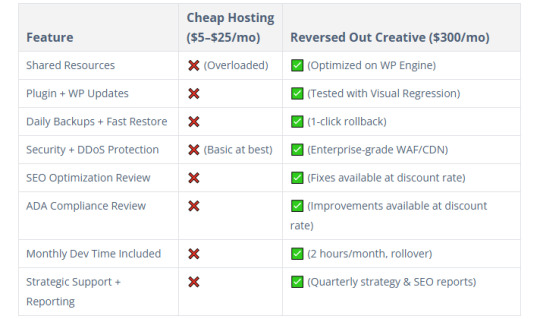
Who This Is For
Mid-sized businesses with websites driving real revenue
Funded startups that need infrastructure but not a full in-house team
Marketing directors and CMOs who want a proactive digital partner
Agencies looking to white-label our team for their clients
Companies that have outgrown Wix, Squarespace, or GoDaddy
Real Impact: Before & After Switching to Reversed Out
“We didn’t realize how slow our old host was until we moved. Our bounce rate dropped by 18%, and leads increased by 22% the first month. The peace-of-mind alone was worth the switch.” — Insurance client in Cincinnati
These results are common when we move a client from bargain-bin hosting to our fully managed, optimized environment.
FAQ’s
Isn’t $300/month a lot for hosting? Not when you factor in the performance boost, dev time, SEO improvements, ADA compliance, and actual support. You’d spend more piecing this together yourself—and you’d still have to manage it.
Can you migrate my site for free? Yes. We handle the full migration, staging setup, and go-live with zero downtime.
What happens if I want to cancel? No contracts, no lock-in. But most clients don’t leave because they finally have a digital partner they trust.
What’s Your Website Really Worth?
If your website brings in leads, sells products, or builds credibility—why risk it on $5/month hosting that does nothing beyond keeping it online?
With Reversed Out Creative, you get:
Enterprise-grade hosting
Real SEO and ADA support
Strategic dev time
Peace of mind
Move once. Fix everything. Stay ahead.
Ready to Switch?
👉 Schedule your free site audit and migration plan
Contact Us
At Reversed Out Creative, we understand the challenges and opportunities presented by AI disruption. Our team of experts specializes in web design, SEO, graphic design, and digital marketing services. Reach out to us through our contact form to learn more about navigating the evolving job market and embracing the potential of AI. Together, let’s shape a future that combines human ingenuity with the power of AI.
Content source: https://reversedout.com/cost-of-cheap-wordpress-hosting/
#Cheap WordPress Hosting#Best WordPress Hosting#WordPress Hosting Costs#Web Development Company In Cincinnati#Web Development Cincinnati
0 notes